Kia Ceed vs Toyota Yaris Cross – Which car suits you better?
Both models have their strengths – but which one suits you more?
Compare performance, efficiency, price and space directly: Kia Ceed or Toyota Yaris Cross?
Costs and Efficiency:
When it comes to price and running costs, the biggest differences usually appear. This is often where you see which car fits your budget better in the long run.
Kia Ceed has a slight advantage in terms of price – it starts at 23500 £, while the Toyota Yaris Cross costs 23700 £. That’s a price difference of around 214 £.
Fuel consumption also shows a difference: Toyota Yaris Cross manages with 4.50 L and is therefore clearly perceptible more efficient than the Kia Ceed with 6 L. The difference is about 1.50 L per 100 km.
Engine and Performance:
Power, torque and acceleration are the classic benchmarks for car enthusiasts – and here, some clear differences start to show.
When it comes to engine power, the Kia Ceed has a slight edge – offering 140 HP compared to 130 HP. That’s roughly 10 HP more horsepower.
In acceleration from 0 to 100 km/h, the Kia Ceed is somewhat quicker – completing the sprint in 9.50 s, while the Toyota Yaris Cross takes 10.70 s. That’s about 1.20 s faster.
In terms of top speed, the Kia Ceed performs a bit better – reaching 197 km/h, while the Toyota Yaris Cross tops out at 170 km/h. The difference is around 27 km/h.
Space and Everyday Use:
Cabin size, boot volume and payload all play a role in everyday practicality. Here, comfort and flexibility make the difference.
Both vehicles offer seating for 5 people.
In curb weight, Toyota Yaris Cross is barely noticeable lighter – 1180 kg compared to 1298 kg. The difference is around 118 kg.
In terms of boot space, the Toyota Yaris Cross offers minimal more room – 397 L compared to 395 L. That’s a difference of about 2 L.
In maximum load capacity, the Kia Ceed performs somewhat better – up to 1291 L, which is about 194 L more than the Toyota Yaris Cross.
When it comes to payload, Toyota Yaris Cross minimal takes the win – 510 kg compared to 490 kg. That’s a difference of about 20 kg.
Who comes out on top?
Overall, the Kia Ceed shows itself to be shows small but notable strengths and secures the title of DriveDuel Champion.
It convinces with the more balanced overall package and proves to be the more versatile choice for everyday use.
 @ Kia Corporation
@ Kia Corporation
Kia Ceed
Kia Ceed
The Kia Ceed is a sensible, stylish hatchback that gives buyers more than they'd expect for the money, blending practical space with crisp, modern looks. It drives with measured confidence and comes loaded with user-friendly kit, so you can enjoy daily life behind the wheel without breaking into a sweat.
details @ Kia Corporation
@ Kia Corporation
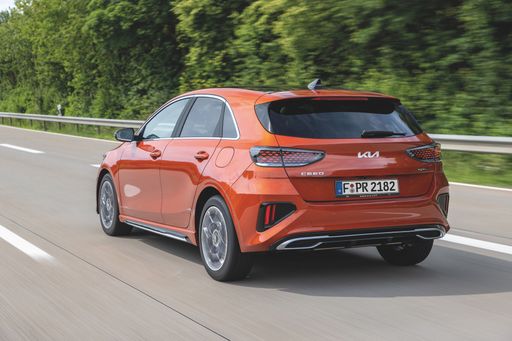 @ Kia Corporation
@ Kia Corporation
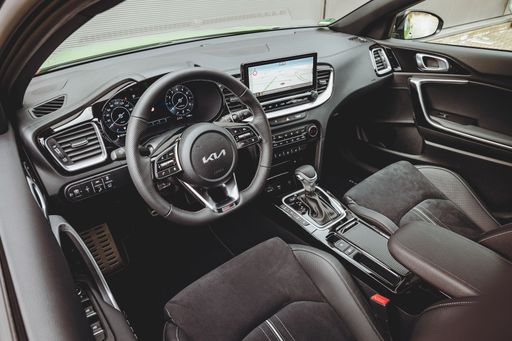 @ Kia Corporation
@ Kia Corporation
Toyota Yaris Cross
The Toyota Yaris Cross takes the jaunty personality of the Yaris and gives it a taller stance and a bit more practicality, so you get city-friendly agility with added SUV presence. It’s easy to live with, economical on the daily grind, and smartly packaged — a sensible pick for buyers who want fuss-free transport with a touch of character.
details @ Toyota Motor Corporation
@ Toyota Motor Corporation
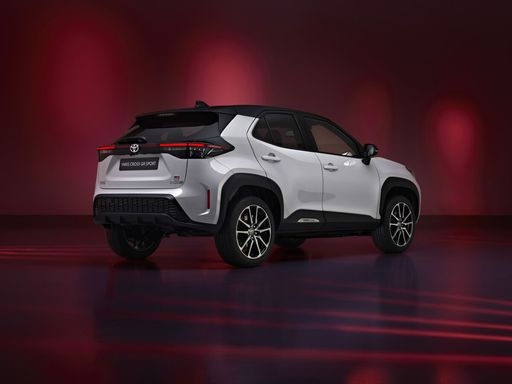 @ Toyota Motor Corporation
@ Toyota Motor Corporation
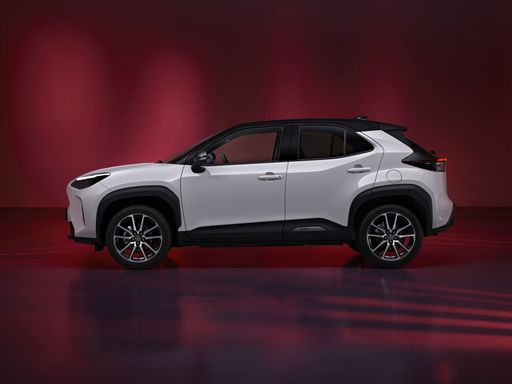 @ Toyota Motor Corporation
@ Toyota Motor Corporation
 @ Toyota Motor Corporation
@ Toyota Motor Corporation
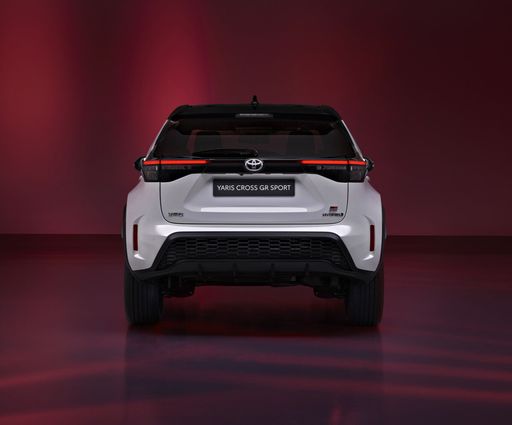 @ Toyota Motor Corporation
@ Toyota Motor Corporation
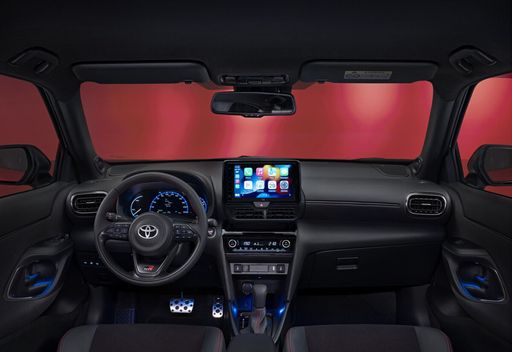 @ Toyota Motor Corporation
@ Toyota Motor Corporation
 @ Toyota Motor Corporation
@ Toyota Motor Corporation
 @ Kia Corporation
@ Kia Corporation
|
 @ Toyota Motor Corporation
@ Toyota Motor Corporation
|
|
|
|
Costs and Consumption |
|
|---|---|
|
Price
23500 - 26300 £
|
Price
23700 - 34300 £
|
|
Consumption L/100km
6 - 6.4 L
|
Consumption L/100km
4.5 - 4.8 L
|
|
Consumption kWh/100km
-
|
Consumption kWh/100km
-
|
|
Electric Range
-
|
Electric Range
-
|
|
Battery Capacity
-
|
Battery Capacity
-
|
|
co2
137 - 146 g/km
|
co2
101 - 108 g/km
|
|
Fuel tank capacity
50 L
|
Fuel tank capacity
36 L
|
Dimensions and Body |
|
|---|---|
|
Body Type
Hatchback
|
Body Type
SUV
|
|
Seats
5
|
Seats
5
|
|
Doors
5
|
Doors
5
|
|
Curb weight
1298 - 1372 kg
|
Curb weight
1180 - 1290 kg
|
|
Trunk capacity
357 - 395 L
|
Trunk capacity
320 - 397 L
|
|
Length
4315 mm
|
Length
4180 mm
|
|
Width
1800 mm
|
Width
1765 mm
|
|
Height
1447 mm
|
Height
1595 mm
|
|
Max trunk capacity
1253 - 1291 L
|
Max trunk capacity
1097 L
|
|
Payload
478 - 490 kg
|
Payload
485 - 510 kg
|
Engine and Performance |
|
|---|---|
|
Engine Type
Petrol, Petrol MHEV
|
Engine Type
Full Hybrid
|
|
Transmission
Manuel, Automatic
|
Transmission
Automatic
|
|
Transmission Detail
Manual Gearbox, Dual-Clutch Automatic
|
Transmission Detail
CVT
|
|
Drive Type
Front-Wheel Drive
|
Drive Type
Front-Wheel Drive, All-Wheel Drive
|
|
Power HP
100 - 140 HP
|
Power HP
116 - 130 HP
|
|
Acceleration 0-100km/h
9.5 - 13.2 s
|
Acceleration 0-100km/h
10.7 - 11.3 s
|
|
Max Speed
178 - 197 km/h
|
Max Speed
170 km/h
|
|
Torque
172 - 253 Nm
|
Torque
-
|
|
Number of Cylinders
3 - 4
|
Number of Cylinders
3
|
|
Power kW
74 - 103 kW
|
Power kW
85 - 96 kW
|
|
Engine capacity
998 - 1482 cm3
|
Engine capacity
1490 cm3
|
General |
|
|---|---|
|
Model Year
2024
|
Model Year
2024 - 2025
|
|
CO2 Efficiency Class
E
|
CO2 Efficiency Class
C
|
|
Brand
Kia
|
Brand
Toyota
|
What drivetrain options does the Kia Ceed have?
The Kia Ceed is available as Front-Wheel Drive.
The prices and data displayed are estimates based on German list prices and may vary by country. This information is not legally binding.
